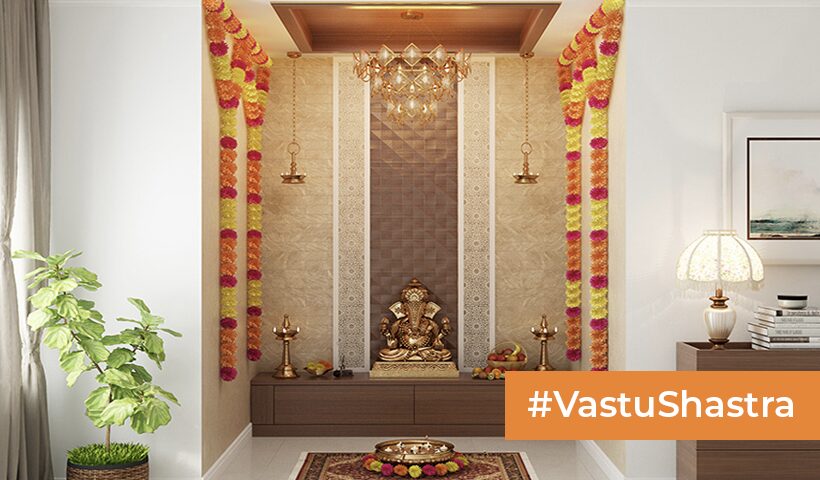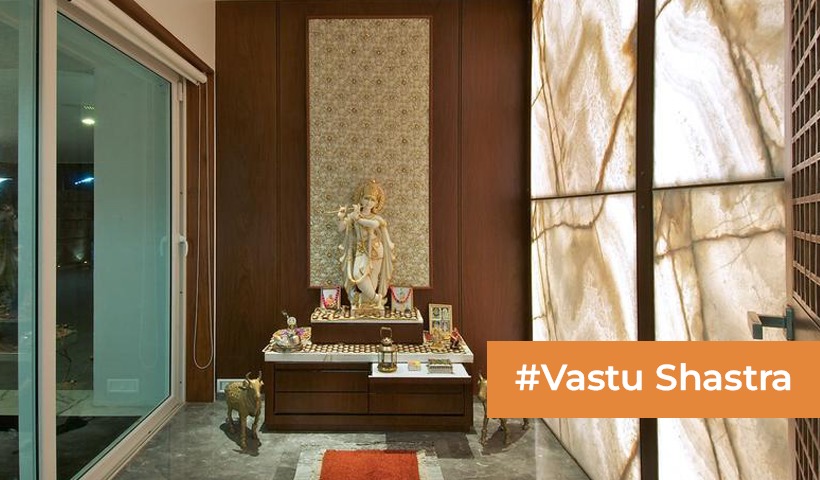Vastu Colors for Home, Kitchen, Bedroom, Walls, and More
According to Vastu Shastra, the ancient Indian science of architecture, the use of colors can significantly influence the flow of energy within a home. When selecting room colors, such as bedroom colors for living room color combinations as per Vastu, the focus goes beyond mere aesthetics to deeply spiritual principles. This article guides Indian readers in choosing the best colors for their home, like the ideal bedroom color as per Vastu or the kitchen color as per Vastu, to create harmonious and energetically balanced living spaces.
Significance of Vastu Colors for your Home
Adhering to the Vastu color scheme for your house will significantly improve the atmosphere and vitality of your living area. According to experts, the colors of your home should be chosen for each area based on its size, orientation, and energy needs. Selecting Vastu hues might improve the visual attractiveness of your room. This promotes a balanced lifestyle by helping to create an aesthetically beautiful and upbeat environment.
Understanding the Role of Vastu Colours as per five Elements and Psychology
The Five Elements
The five components of Vastu—earth, water, fire, air, and space—are all in equilibrium. A space’s good energies are said to be enhanced by the thoughtful use of certain colors, such as the bedroom color as per Vastu or kitchen color as per Vastu, each of which is linked to a particular element.
Psychological Impact
Colors have a significant effect on our feelings and general wellbeing. Vastu considers how colors, like the living room color combination as per Vastu or the best color for home, affect people psychologically while designing environments that encourage wealth, peace, and optimism.
Earth
When stability is essential, this component is crucial. For instance, the living room, bedroom, etc. Use earthy tones, such as beige, off white, green, and brown, to balance this feature. You may also use natural materials in your interior design.
Fire
This element is appropriate for the kitchen and living area and represents brightness and a lot of vitality. Although the fire element is associated with colors like red and orange, it is best to combine these hues with neutral colors to create a balanced look.
Water
This element is shown through the many tones of blue, sea green, etc. This element’s activity and color are common in baths and bedrooms and are symbolic of calm.
Air
As its name implies, this element is more open and in tune with nature. Pastel colors and lighter tones of green, yellow, and other colors are appealing and aid in controlling this aspect. The living room is one of the spaces where this feature is most noticeable since it is open and seamless.
Space
The living room entry, the meditation room, and other areas are among the spaces where this aspect is most noticeable. Pastel colors like white or cream go well with this aspect.

Best Vastu Colours for different Rooms of your home
According to Vastu Shastra, selecting the appropriate colors for your home helps improve the flow of positive energy. The color of a room has a significant impact on the harmony, mood, and overall energy balance. This table offers advice on which colors work best for different rooms in your house according to Vastu, as well as which colors should be avoided in order to keep a calm and prosperous atmosphere.
Include Rooms: Kitchen, Bedroom, Living Room, Pooja Room, Bathroom, Children’s Room, Study Room, Dining and Hall.
| Room | Best Colors as per Vastu | Colors to Avoid |
| Kitchen | Yellow, Orange, Red | Black, Dark Blue, Dark Green |
| Bedroom | Light Blue, Lavender, Light Green | Red, Dark Grey, Dark Brown |
| Living Room | Light Yellow, Green, Beige | Dark Red, Black, Dark Brown |
| Pooja Room | White, Light Yellow, Light Blue | Black, Dark Red |
| Bathroom | White, Light Blue, Grey | Dark Brown, Black |
| Children’s Room | Light Green, Light Blue, Lavender | Dark Red, Black, Dark Grey |
| Study Room | Green, Light Brown, Light Blue | Dark Red, Black |
| Dining Room | Light Green, Pink, Blue | Black, Dark Grey |
| Hall | White, Cream, Light Green | Dark Blue, Dark Red |
Kitchen Colour as per Vastu
The kitchen is the center of the house, and the proper color scheme may create a happy atmosphere. According to Vastu, the kitchen should be decorated with orange, red, yellow, and pink hues. These vivid colors pique appetites and encourage good vibes, which enhances the pleasure of cooking and eating. These hues are thought to improve the kitchen’s circulation of life, vigor, and excitement. However, it is better to stay away from utilizing black and gray hues because they can produce a dreary, heavy mood that lowers the energy level in the room as a whole.
Bedroom Colour as per Vastu
The bedroom is a place to unwind and revitalize. Blue, green, and pink tones in their lighter tints are calming and calming. Establishing a quiet and peaceful atmosphere in the bedroom is crucial for encouraging sound sleep and relaxation. Choose calming hues such as lavender, pale green, and blue. These tranquil colors help you relax after a hard day by having a relaxing impact on both the body and the mind. These hues are linked to harmony, tranquility, and mental health. Bright and striking colors should not be used in the bedroom since they might be overly stimulating and interfere with your ability to unwind and have a good night’s sleep.
Living Room Colour as per Vastu
The living room serves as a gathering place for friends and family. Since the living room is where family and friends congregate, it’s important to select hues that foster a cozy and welcoming atmosphere. Vibrant and cheery hues like blue, green, and yellow are ideal for this area. These hues encourage harmony, conversation, and a vibrant atmosphere. Dark and strong hues, however, should be avoided in the living room since they might make the area seem smaller and less inviting. These hues are ideal for a vibrant environment since they stand for joy, development, and peace.
Pooja Room Colour as per Vastu
A sacred area for meditation and prayer is the Pooja room. These hues stand for spirituality, enlightenment, and purity. White is regarded as the most auspicious hue in this area since it represents serenity and cleanliness. The Pooja room’s use of white as the main tone produces a calm and heavenly ambience. To create a calm and peaceful atmosphere, light pink, light blue, and light yellow hues can also be employed. Dark and strong colors should not be used in the Pooja room since they might disturb the calm and peaceful atmosphere needed for meditation and prayer. Via the use of Vastu principles, you may create a harmonious living space and amp up the good energy in these particular spaces. It is important to keep in mind that selecting colors for your house should correspond with the intended use of each space, creating a harmonious and fortunate ambience all around.
Bathroom Colour as per Vastu
Vastu design heavily emphasizes color, thus picking the appropriate bathroom color may assist create a balanced and healthy space. White, light blue, or light green are the best hues for bathroom walls, according to Vastu. These hues provide a clean, fresh atmosphere while encouraging happiness, calmness, and wellbeing. Additionally, enough lighting in the bathroom is crucial since it encourages the flow of positive energy.
Children’s Room Colour as per Vastu
The color you choose for your child’s room should be uplifting. Choose colors that are blue, green, pink, yellow, or even white, according to Vastu. Selecting these shades or pastels will provide a serene and cozy atmosphere in the space.
Study Room Colour as per Vastu
It is advised by vastu that study rooms be decorated in vibrant hues. Brighter hues like blue, green, yellow, and orange work best in study spaces because they create a happy environment that improves focus. Although using bright hues sparingly might make our place appear appealing, Vastu advises against doing so. Bright hues might impair attention levels if used extensively, according to vastu shastra. Vibrant hues can be used as accents to provide some color without going against the vastu principles.
Dining Room Colour as per Vastu
It’s crucial to choose the appropriate dining room hue according to vastu after considering various color combinations. Experts in vastu say that hues like orange, yellow, blue, and green in various tints are the best choices for your eating area.
North Facing: According to Vastu, your dining room should be painted in colder hues like blue or green if it faces the north. East Facing: Use warmer color schemes like orange, yellow, or peach if your dining area faces east.
Hall Colour as per Vastu
Every home’s living room serves as the energy hub. The direction of the hall should ideally be north-east or north-west. According to Vastu, a hall should be painted white or yellow. It ought to be a calm and cosy area. Shades of white, yellow, relaxing green, or blue are the best vastu hues for this type of dwelling. According to Vastu, the colour scheme for the hallway shouldn’t be striking or vivid.
Wall Colour as per Vastu Direction
Choosing wall colors based on Vastu directions may have a big influence on your home’s overall atmosphere and energy flow. This guide will help you create harmony and optimism in your living area by outlining the best colors for each direction.
| Direction | Best Wall Colors as per Vastu | Colors to Avoid |
| North | Green, Light Blue, Silver | Red, Pink, Dark Orange |
| North-East | Yellow, Light Blue, White | Dark Red, Black |
| East | White, Light Blue, Green | Dark Brown, Dark Grey |
| South-East | Orange, Pink, Silver | Black, Blue |
| South | Red, Pink, Coral | Black, Dark Blue |
| South-West | Peach, Brown, Maroon | Green, Blue |
| West | Blue, White, Grey | Red, Orange |
| North-West | White, Cream, Light Grey | Dark Yellow, Dark Brown |
East Wall Colour as per Vastu
White is a suggested color for walls facing east because it represents enlightenment, purity, and fresh starts. The element of air, which is connected to the east, represents intelligence and understanding. White paint on your east-facing walls can promote openness and clarity, which can boost positive thinking and intellectual development.
West Wall Colour as per Vastu
Since blue is the hue of tranquility, peace, and emotional balance, it is ideal for walls facing west. Earth is the element linked with the west direction; it represents steadiness and a sense of being grounded. By painting the walls that face west blue, you may create a calm and relaxing space that encourages emotional stability and relaxation.
North Wall Colour as per Vastu
On walls facing south, use red and yellow to evoke warmth, vigor, and enthusiasm. The element of fire, which stands for daring, passion, or transformation, is connected to the south. Yellow denotes joy and optimism, while red represents strength and power. If you use these hues on your south-facing walls, your house will seem more vibrant and energizing.
South Wall Colour as per Vastu
On walls facing south, use red and yellow to evoke warmth, vigor, and enthusiasm. The element of fire, which stands for daring, passion, or transformation, is connected to the south. Yellow denotes joy and optimism, while red represents strength and power. If you use these hues on your south-facing walls, your house will seem more vibrant and energizing.
North East Wall Colour as per Vastu
For walls facing north-east, white and light blue are lucky hues because they encourage spirituality, serenity, and heavenly guidance. According to Vastu Shastra, the north-east orientation is the most auspicious since it is linked to enlightenment and spiritual development. By using these hues on your northeast-facing walls, you may establish a tranquil and peaceful environment that is ideal for reflection and meditation.
South East Wall Colour as per Vastu
Southeast-facing walls look best with silver and light gray paint colors since they are sophisticated, elegant, and contemporary. Fire is a creative and passionate element that is connected to the south-east direction. Silver or light gray paint may offer a touch of refinement to your house and encourage artistic freedom and inventiveness on the walls facing south-east.
South West Wall Colour as per Vastu
Walls facing south-west should be painted in peach or light brown since these colors evoke feelings of stability, coziness, and warmth. Grounding and stability are symbolized by the element of earth, which is connected to the south-west direction. By using these hues on your southwest-facing walls, you may foster a warm and inviting atmosphere that will support emotional stability and well-being.
North West Wall Colour as per Vastu
For walls facing north-west, light gray and white are suggested because they represent mental clarity, purity, and focus. The element of air, which is connected to the north-west, represents intelligence and communication. You may promote healthy relationships and personal development by painting your northwest-facing walls white or light gray. This will encourage open conversation and clear thinking. You may improve the positive energy flow, balance, and harmony in your house and create a lively and caring living environment for you and your family by using the right Vastu colors according to the orientation of your walls.
Vastu Color Tips for a Harmonious Home
Considerations for Colour Selection
To achieve harmony and consistency when choosing the best house paint hues, choose a color scheme and stick to it. The finest hue for your property should be chosen to complement the spirit you want to generate there.
Colour Schemes and Combinations
When choosing colors for the palette, choose complementary hues that contrast with one another. Orange and blue or red and green are examples of complimentary color combinations that produce a lively and well-balanced visual impression. As the foundation of your color scheme, choose neutral hues like beige, white, and gray to create a strikingly balanced background.
Applying Vastu Colour: Dos and Don’ts
One of the finest house color ideas is to pick a color scheme and pair it with opposing hues. Avoid using dark hues, though, since they symbolize bad planets that might interfere with the energy fields of our home, such as red, black, and deep yellow.
Vastu Colors: A Fit for Contemporary Interiors
Even though vastu is an old discipline, modern home design may benefit from using the appropriate hue combinations. For the ideal balance, use the color scheme and select wall and room hues based on Vastu.
Colours to avoid in the house as per Vastu
- Given that they symbolize some of the fiery planets, such as Rahu, Shani, Mars, and the Sun, dark hues like black, brown, red, and gray according to Vastu may not be suitable for everyone.
- Steer clear of painting the entire house white since it’s said to incite ego in people.
- According to Vastu, the color black is highly disruptive and should be totally avoided when used in temples or pooja rooms. It is capable of lessening the beneficial energy flow.
- Steer clear of black flooring in the kitchen.
- According to Vasu, stay away from using too much red in your bedroom as it symbolizes fire energy and might lead to temperamental problems.
- As vastu colors for homes, homeowners should also refrain from using any gloomy hues in the garage and parking lots.
- Dark hues should be avoided as vastu colors for the study since they will make the area feel more gloomy.
- Avoid using dark hues in the child’s room, such as red or dark blue, as they might encourage violence.
- Steer clear of dark gray, brown, and black, which are considered Vastu hues for kitchens. Since the kitchen is a place where fire rules and blue represents Varuna, the deity of water, it is best to avoid using blue for kitchen walls or even kitchen cabinets.
- In the dining room, stay away from black and white, according to Vastu colors for the home.
- Dark coloured bathroom cabinets should never be used. Therefore, stay away from using hues like red and black while installing cabinets.
Consequences of Ignoring Vastu Colors in Your Home
Colors have a profound effect on our feelings and general wellbeing. Vastu Shastra, an Indian architectural discipline, suggests that you design your house with auspicious hues to create positivity and well-being within. When selecting hues, you must strike a balance between your preferences, a pleasing décor, and Vastu compliance. If you don’t use the Vastu colors that are advised for your house, then all the components aren’t in alignment to produce the necessary amount of good energy. If you are unable to adhere to any recommended cure, you may choose to consider alternate remedies provided by Vastu experts.
Conclusion
The harmony, vitality, and well-being of your house may be substantially impacted by selecting the appropriate wall colors according to Vastu. Colors may be arranged to improve pleasant vibes and create a balanced living space by matching up with particular orientations. It is equally crucial to steer clear of unfavorable colors in either direction to avoid bad energy. You may create a peaceful, prosperous, and optimistic environment in your house by carefully choosing your color scheme, whether it’s the bright reds for the South or the calming greens for the North.
FAQs
Which color is best for home as per Vastu?
Light shades like white, cream, light yellow, and light blue are best for a home as they promote peace and positivity.
Which colors should be avoided by Vastu?
Dark shades like black, dark red, and dark gray should be avoided as they can attract negative energy.
Which colour is lucky for outside house?
Light yellow, white, and light blue are considered lucky for the exterior of the house.
Which color is best for an entrance wall?
Light green, light blue, or white are ideal for the entrance wall to welcome positive energy.
What color is good luck for a house?
Light shades of green, blue, yellow, and white are considered good luck for a house.
What are the colors that are considered auspicious according to Vastu?
White, light blue, light green, and yellow are considered auspicious colors as per Vastu.
How is blue color good for the home as per Vastu?
Blue represents tranquility and calmness, making it ideal for rooms that require peace, like the bedroom or study.
What are the happy colors?
Yellow, light green, orange, and pink are often associated with happiness and positivity.
Disclaimer: The views expressed above are for informational purposes only based on industry reports and related news stories. PropertyPistol does not guarantee the accuracy, completeness, or reliability of the information and shall not be held responsible for any action taken based on the published information.




